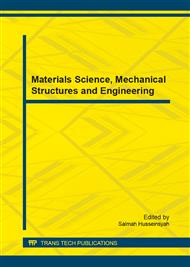p.529
p.534
p.539
p.543
p.547
p.551
p.557
p.561
p.566
Security Design System of Prison Architecture Based on New Materials
Abstract:
This paper discusses empirical findings and theories about prison architecture security system and security fence material. As advanced security systems and high quality materials became increasingly significant for prison architecture. The prison insecurity fence design and lag behind materials consume use results in threat of jail safety, which implies that scholar focus on such security design system is necessary. Few people, therefore, doubt the value of new building materials and financial theory to justify prison security system as enhance safeguarding measure. Most scholars of penology promoted consensus on application of new materials can enhance the performance of prison fences, which focus on the security aspects of prison architecture, and this is case studies on the role of security design system and new materials reuse in prison architecture, solutions for make security sustainable development in a national prison system. Thus, there is a continuing need to carry out well-designed research on this question as improve the safety measures. Conclusions and directions for further research are provided.
Info:
Periodical:
Pages:
557-560
Citation:
Online since:
October 2014
Authors:
Keywords:
Price:
Сopyright:
© 2014 Trans Tech Publications Ltd. All Rights Reserved
Share:
Citation:


